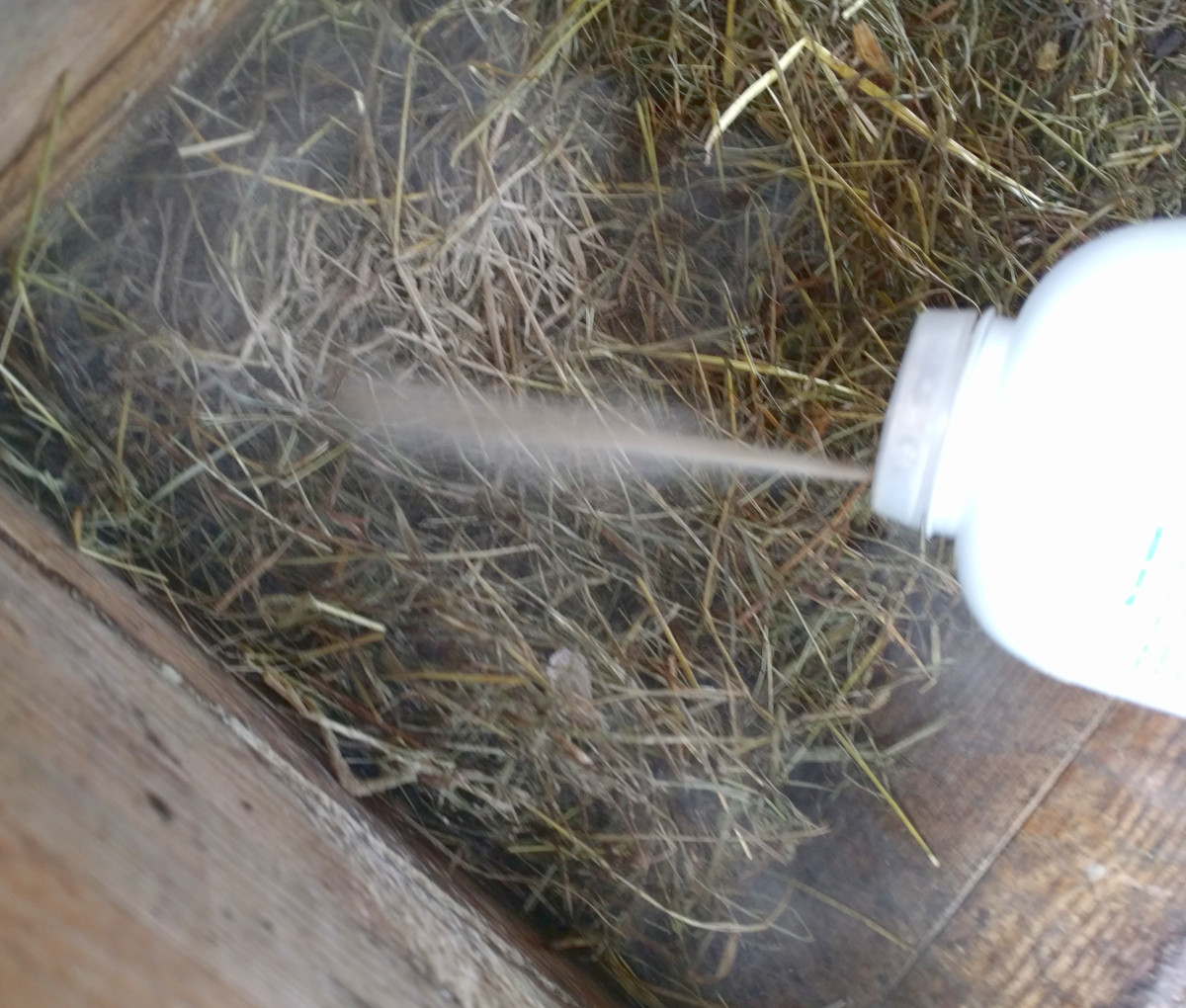How, how much and where to apply diatomaceous earth to chickens and poultry.

This post contains close up video of poultry mites and insects before and after treatment.
Table of Contents
What is the best way to use diatomaceous earth?
Diatomaceous earth is a contact pesticide that requires between 24 and 48 hours to be effective and needs to reapplied at least once a week during the mite season. The best time to apply is in the morning as soon as all the surfaces are dry.
You should always use DE outdoors and never indoors in enclosed spaces. It is a desiccant and an irritant which means it can dry your skin and cause irritation to your lungs.
Below: This is a video of insects (baby crickets X 6 magnification) before I tested diatomaceous earth on them. Notice how active and mobile they are.
The best way to use diatomaceous earth for chickens and other types of poultry is as a feed additive or topical pest control. You should let diatomaceous earth sit after application for at least 48 hours.
Below: After the application of DE. The insects are reluctant to move.
You should never mix diatomaceous earth with water to apply, it is much better to apply dry. It seems easy to mix it with some water and paint it on to the coop but it will be much more efficient dry.
You can not mix diatomaceous earth with water and spray it on, it will clog the sprayer.
How often should I give my chickens diatomaceous earth?
When used as a feed supplement diatomaceous earth should be given daily at between 2% and 3% of the total feed and when used as a topical pesticide it must be used weekly from Spring to Fall.
The three biggest mistakes I see when using DE are not staring to use it early enough in the year, not applying enough in the first attempt and not using it often enough.
All the studies into diatomaceous earth show it begins to become ineffective one week after application.
Can you use too much diatomaceous earth?
You can use too much diatomaceous earth but it is not really a problem except that it is a waste.
Over application is not an issue like it would be with a chemical treatment, it will just end up costing you more money.
Diatomaceous earth won't work quicker if you use too much either so it is best to measure the amounts accurately and apply weekly.
How to use diatomaceous earth (DE):
You can apply diatomaceous earth directly to chickens, and you should do if you have a bad infestation of lice or fleas, but it is far more effective to use it around the coop, nest boxes and dust baths for long term control.
In the image below I have covered the chicken with a slightly damp cloth and I am using a puffer bottle to blow the dust into the feathers. You should puff under the wings and on the back and generously around the vent area.
Below: Demonstrating how to apply diatomaceous earth directly to a chicken.

You can apply DE directly to chickens but you should also add it to the nest boxes and all the cracks and gaps in the coop as well as the bedding and dust baths.
How much diatomaceous earth do I put on a chicken?
The actual amount used will depend on the size of your coop, the number of birds you have and where you live. Tropical areas will need to be treated year round but anywhere with freezing winters will need applications from early Spring to late Fall.
Table of dosages for diatomaceous earth:
| Diatomaceous earth use. | Dosage amount. | Frequency. |
| Directly to the bird | 1 tablespoon per bird. | Weekly while infestation lasts. |
| Chicken mites, lice or fleas. | Up to 8 oz initially to treat the birds, coop and nests. Subsequent treatments will need much less. | Weekly. |
| Chicken coop | Up to half a lb per bird initially puffed into all cracks, corners, nests and perches. 1 oz per chickens for the second application. | Weekly. |
| Broody hens. | 1 oz per bird and 4 oz puffed into the nest before setting. | One off as needed. |
| Dust bath (dry) | 4 oz per chicken for the first dose, then 1 oz per week thereafter. | Weekly. |
| Nest boxes | 1 to 2 oz per nest box puffed into all corners and the bedding. | Weekly. |
| Worming chickens | 3 grams to 4 grams per day per chickens added to the feed. | Daily. |
| Chicken feed | 2% to 3% of the total feed amount | Daily. |
Can chickens dust bath in diatomaceous earth?
Adding DE to dust bath is one of the best ways to treat chickens. They effectively treat themselves.
Below: The dust bath is an evolutionary tactic chickens have adopted to help control parasites. You can help by adding DE to the dust bath.
As long as the dust bath is dry add 4 ounces of DE per chicken to the dust bath and then top up every week or so.
